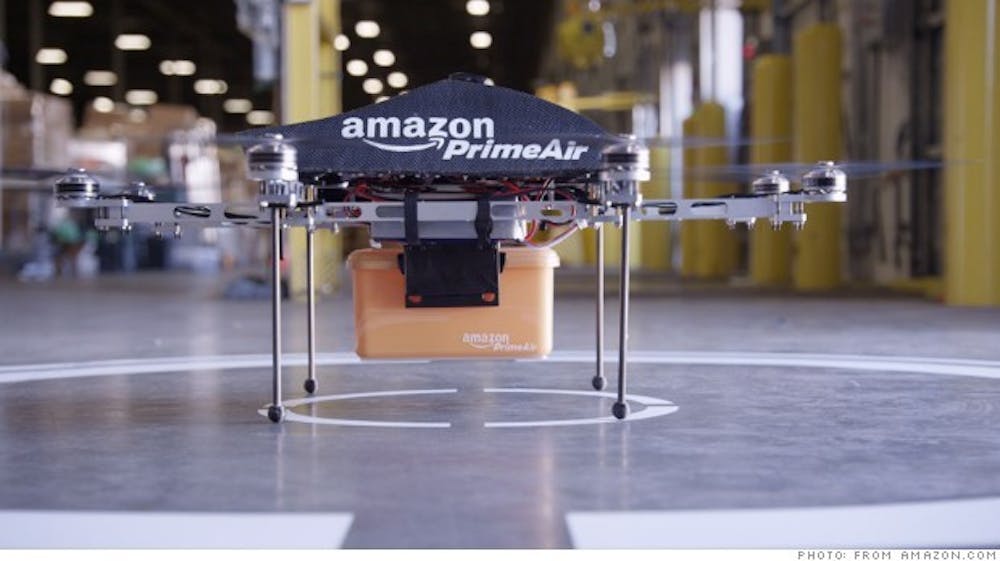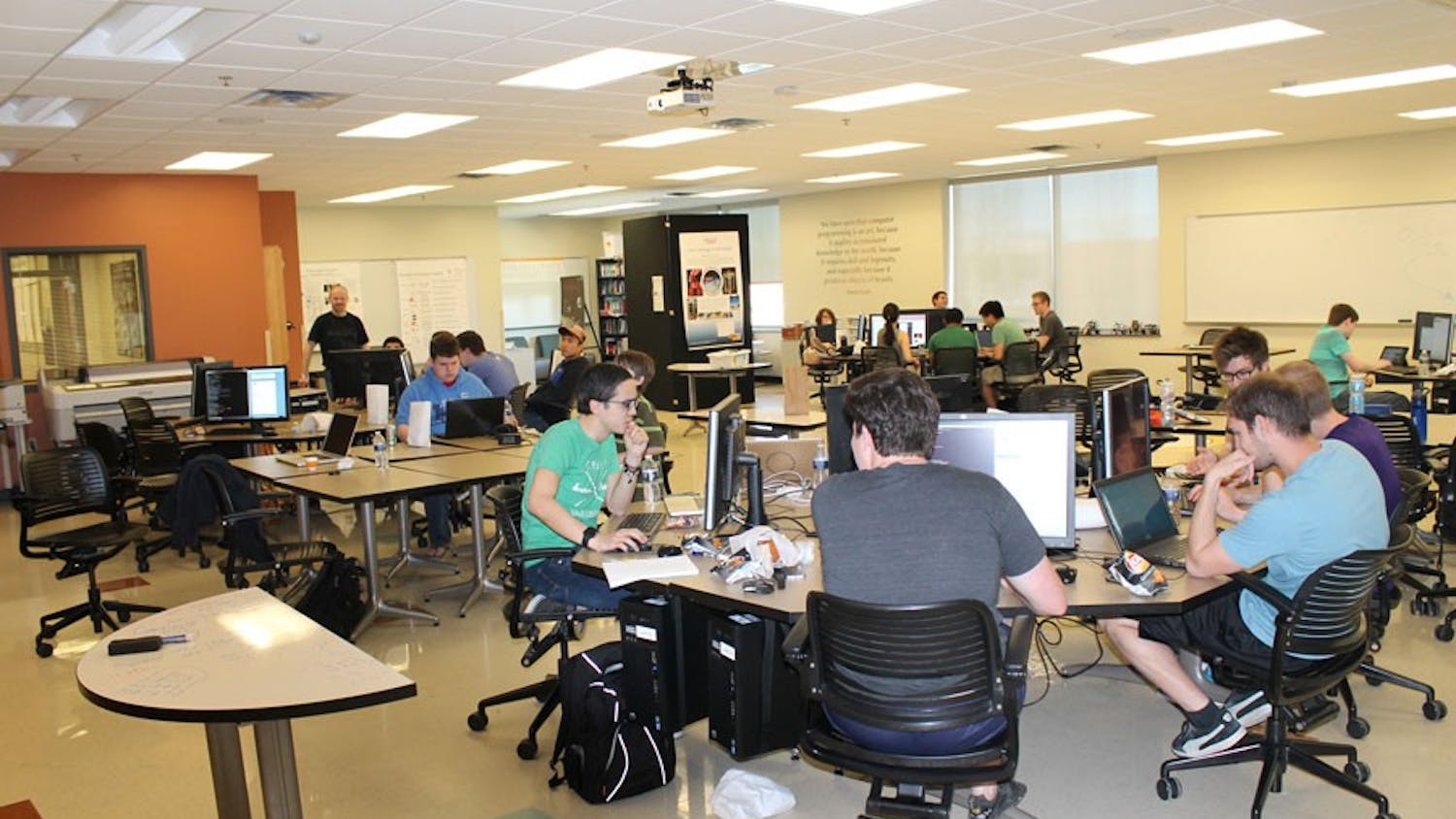By Alex Mellen | Echo
The drones are coming.
Online retailer Amazon released a video this week of its newly-imagined Amazon Prime Air, an unmanned aerial system (UAS) that would deliver packages to customers within 30 minutes of their order. Domino's Pizza has also been considering a drone delivery system this summer.
But many proponents for drone usage don't prefer the term "drone" because of its connotations.
"A drone is a militarized UAS, which is why we use UAS rather than drones in our language," said Michael Holmes, chair of journalism at Ball State University (BSU). "But people think of government surveillance and missiles raining out of the sky when they think of drones."
Holmes wants UASes to be considered helpful tools in the everyday world, including for journalists. Holmes, news organizations and other journalism instructors are among the first to test the waters of commercial UAS use. Commercial because current FAA (Federal Aviation Administration) rules limit UAS activities to recreational users.
These regulations, which date back to 1981, also limit UAS flight to 400 feet above the ground and restrict flying in populated areas or near airports.
Holmes and fellow BSU professor Tim Pollard, chair of telecommunications, are developing a graduate-level seminar class to discuss UAS practices and policies.
"The goal is an understanding of this brand new area where nobody really knows where it's going. It's just as important to us as the faculty at the university . . . as it is for students," Pollard said.
Holmes agreed, stressing knowledge of safety and presentation before flying.
"(Students) need to know the legal issues, the safety issues, the ethical issues, and they need to become familiar with the practical issues of airborne photography and videography, the aesthetics," he said.
UPS Also Said To Be Testing Drone Delivery, Constant Robot Background Hum Increasingly Inevitable http://t.co/vMI65iSf4U by @drizzled
- TechCrunch (@TechCrunch) December 3, 2013
Some colleges have already purchased UAS and attempted flights. The University of Missouri (Mizzou) and the University of Nebraska-Lincoln (UNL) own and operate UASes as part of their journalism curriculum. They've also already butted up against current government regulations for remote aircraft.
In July, Mizzou and UNL received letters from the FAA, asking them to apply for a Certificate of Authorization, since they are not recreational flyers. They are grounded until they can apply for a certificate and for 60 days while it's being processed.News organizations in other countries are already reporting with UASes. CNN covered Typhoon Haiyan in the Philippines Nov. 18 using video footage from a UAS. The drone's camera panned across acres of debris, showing the extent of the damage better than a ground-based camera and more cheaply than a helicopter.
This form of use is illegal currently in the U.S., but that hasn't stopped some. When a house explosion rocked the town of Liberty Center, Ohio, WTVG flew a UAS above the scene with permission from the emergency response team on the site, according to Pollard. Both groups benefited from the overhead view and the safer alternative to sending people into dangerous locations.
The FAA will be revising their regulations by 2015. Commercial and recreational flyers are awaiting the news with bated breath.
"Right now, it's really gray. Nobody knows right now," Pollard said. "That's why everybody's juggling right now and advocating for this or that."
Holmes understands where the resistance toward UAS is coming from, but he remains optimistic.
"I think there's so much demand, the FAA is going to have to open it up," he said.
Mayfield Backs Connected, Commercial Drone Maker 3D Robotics With $6M http://t.co/OxV2vcYwoP by @leenarao
- TechCrunch (@TechCrunch) December 4, 2013
Several ethical issues face off in the UAS debate. Journalists have freedom of the press by the 1st Amendment, but a small vehicle in the sky can see people and places that used to be private.
"If I'm flying around, and I'm on the air live with my little video camera and I'm 40 feet in the air, and I look inside an apartment complex, did I violate your rights? Even though I'm in open space?" Pollard wondered.
Safety is also a major concern. In late August, an unknown person flew a small camera-equipped drone above a bull run in Virginia, according to WTVR news. The copter took an unexpected dive and hit two people in the stands. Though they were not seriously injured, the accident, one of many, underscored Holmes' point that anyone can currently go to a hobby shop, purchase a UAS and fly it without knowing anything about operation or safety.
"There will be accidents, and that's why training, solid principles of safe, ethical and legal operation, need to be in place," Holmes said.





